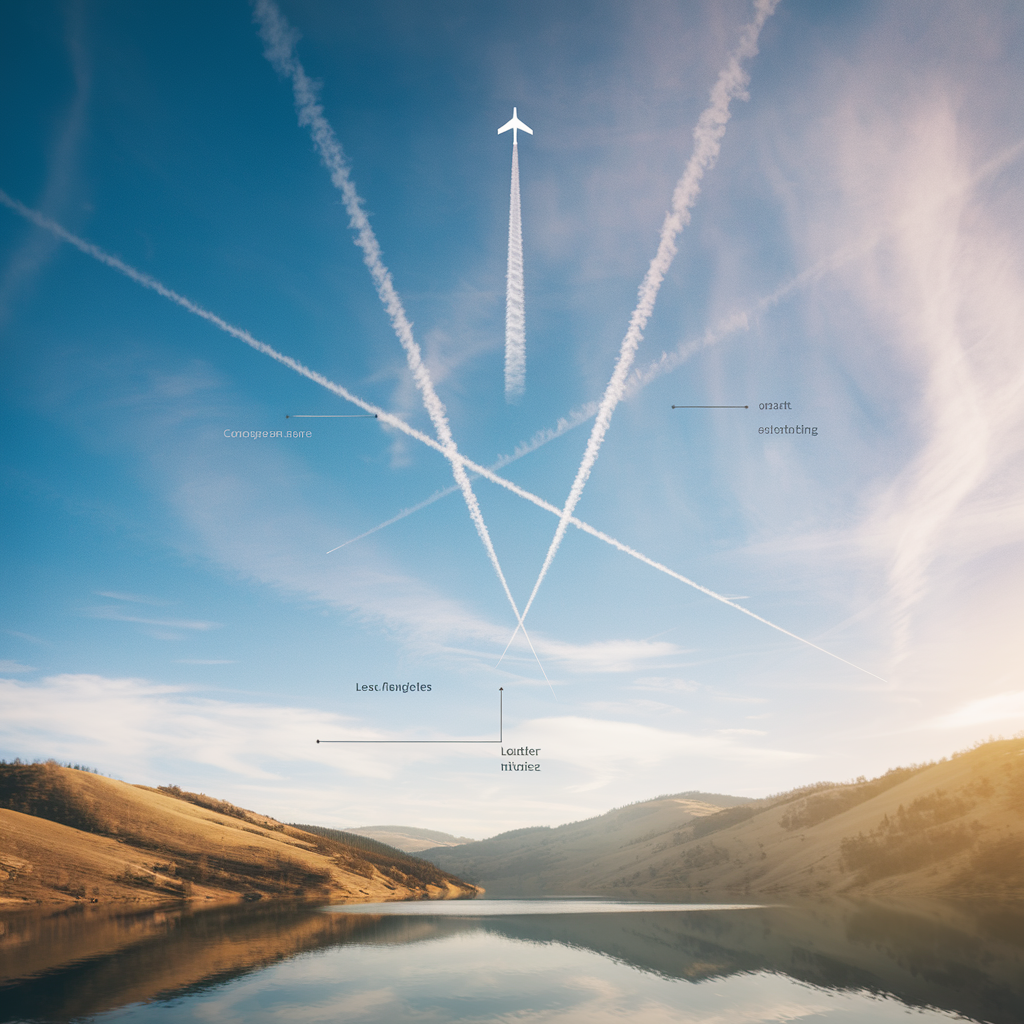Visit white streaksoften referred to as contrailsare phenomena created by aircraft. These streaks appear when the air is sufficiently cold and humid at the altitude at which aircraft fly. As they exit the engines water droplets The gases released by combustion freeze, forming tiny ice crystals. These crystals create the white patterns we see in the sky. These white lines are just a cloud of water vapour, the simple, natural result of a passing aircraft. Contrary to popular belief, these trails contain no chemicals.
The contrail phenomenon
Visit condensation trailsor contrailsare phenomena regularly observed in the sky following the passage of an aircraft. But what are they really? These white lines are formed by the water vapor condensation emitted by the aircraft's engines when flying at high altitude.
At this altitude, the air is particularly cold and often humid, favoring the condensation of water vapor into small ice crystals, creating these visible trails. They can be perceived as clouds artificially created by human activity.
Conditions conducive to contrail formation
Many people wonder why these white streaks appear at certain times but not at others. The answer lies in atmospheric conditions. A combination of low temperature and high humidity is required for water to crystallize. So, when an aircraft passes through an area where the air is sufficiently cold and humid, these trails take shape, often extending far behind the aircraft.
Dissipation and persistence of contrails
The persistence of these trails can vary considerably. Some evaporate quickly, leaving a clear sky a few minutes after the aircraft has passed, while others remain suspended for several hours. Visit persistent streaks can even evolve into large cloud banks under certain conditions.
This phenomenon of persistence depends mainly on the stability of the ambient air and its humidity. When conditions are stable, streaks persist and can spread. Atmospheric conditions thus determine not only the formation, but also the ephemeral or long-lasting nature of these white lines in the sky.
Impact on the environment
Although these beautiful white lines shape the sky, they are not without environmental concerns. Contrails contribute to cloud cover, which can have a minor but significant impact on the climate, particularly in terms of increasing the greenhouse effect.
Scientists are currently investigating how these trails influence thermal entropy, and the potential impact of commercial aviation on global warming. Despite their aesthetic appeal, these attractive marks raise the question of the balance between air travel and climate protection.
Deciphering the myths surrounding contrails
A frequently asked question is: do the white trails released by aircraft contain chemicals? This is where the myth of the chemtrailsThese claims have been categorically refuted by the scientific community. These claims, however, have been categorically refuted by the scientific community.
In reality, contrails are nothing more than a mixture of water vapour and impurities contained in jet engine exhaust gases, crystallizing on contact with very cold air. Studies by numerous environmental organizations, such as Greenpeace, confirm that this is simply a natural phenomenon associated with aviation, with no hidden or dangerous intention.
Seeing the sky in a new light
Visit white streaks left in the wake of aircraft are no more and no less than the product of the interaction between human technology and natural elements, becoming a visible and tangible part of our environment. To notice these signs in the sky is to observe a hint of technology cohabiting harmoniously in our shared airspace.

Origin and Explanation of Aircraft White Streaks
| Factor | Description |
| Phenomenon name | Condensation trails (Contrails) |
| Weather conditions | Cold, humid air at altitude |
| Source of training | Reactor steam |
| Visual effect | Floating white lines |
| Persistence time | Variable (may be brief or prolonged) |
| Composition | Ice crystals |
| Possible impacts | Influence on cloud formation |
| Misperceptions | Linked to conspiracy theories (Chemtrails) |
| Information sources | Scientific documentation |
| Official position | A harmless natural phenomenon |




